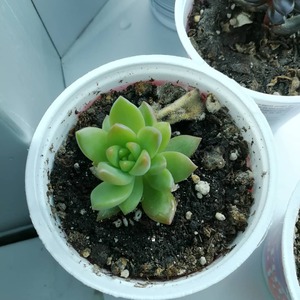Posts (221)
格桑花
2023-11-17

Introduction
Self-care is the practice of intentionally taking care of our physical, mental, and emotional well-being. It involves prioritizing activities and habits that promote self-nourishment, relaxation, and rejuvenation. In our fast-paced and demanding lives, self-care is crucial for maintaining overall well-being and preventing burnout. In this guide, we will explore the importance of self-care and provide strategies to incorporate it into your daily routine.Physical Health
Taking care of your physical health is essential for overall well-being. Consider these practices: - Get regular exercise to boost your mood, increase energy levels, and improve physical fitness. - Eat a balanced and nutritious diet to fuel your body and support optimal functioning. - Prioritize sleep by establishing a consistent sleep routine and ensuring you get enough rest each night.Mental and Emotional Health
Caring for your mental and emotional well-being is vital for maintaining a healthy mind. Consider these strategies: - Practice mindfulness and meditation to reduce stress, enhance self-awareness, and promote emotional balance. - Engage in activities that bring you joy and relaxation, such as hobbies, reading, or spending time in nature. - Seek professional help or counseling if you are struggling with mental health issues or emotional challenges.Boundaries and Saying No
Setting boundaries and learning to say no are essential aspects of self-care. Consider these approaches: - Learn to prioritize your needs and say no to commitments or activities that drain your energy or overwhelm you. - Communicate your boundaries clearly and assertively to others, ensuring that your well-being is respected. - Practice self-compassion and let go of guilt or fear of disappointing others when setting boundaries.Self-Reflection and Self-Awareness
Engaging in self-reflection and developing self-awareness is crucial for self-care. Consider these practices: - Take time to reflect on your feelings, thoughts, and needs regularly. - Journaling or keeping a diary can help you gain insights into yourself and your experiences. - Regularly check in with yourself and assess your well-being, making adjustments as needed.Social Connections and Support
Nurturing social connections and seeking support from others is an important aspect of self-care. Consider these strategies: - Cultivate relationships with supportive and uplifting people who contribute positively to your life. - Make time for social activities and gatherings that bring you joy and a sense of belonging. - Seek out support networks, such as friends, family, or support groups, during challenging times.Time Management and Prioritization
Effective time management and prioritization are crucial for self-care. Consider these techniques: - Identify your priorities and allocate time and energy accordingly. - Practice time-blocking or scheduling to ensure you have dedicated time for self-care activities. - Delegate or ask for help when needed to avoid becoming overwhelmed or overburdened.Regular Self-Care Practices
Establishing regular self-care practices is key to maintaining overall well-being. Consider these self-care activities: - Engage in activities that bring you joy, relaxation, and fulfillment, such as taking baths, reading a book, or engaging in hobbies. - Practice self-care rituals, such as setting aside time for self-reflection, gratitude, or affirmations. - Take breaks throughout the day to recharge and reset, even if it's just a few minutes of deep breathing or stretching.Conclusion
Self-care is not a luxury; it is a necessity for maintaining overall well-being. By prioritizing physical health, caring for your mental and emotional well-being, setting boundaries, engaging in self-reflection, nurturing social connections, practicing effective time management, and establishing regular self-care practices, you can cultivate a healthier and more fulfilling life. Remember, self-care is an ongoing practice that requires intentional effort, and by taking care of yourself, you are better equipped to care for others and live a balanced and meaningful life.
Article
格桑花
2023-11-17

Introduction
Mindfulness is the practice of being fully present in the current moment, without judgment or attachment to the past or future. It involves paying attention to our thoughts, emotions, and experiences with curiosity and acceptance. By cultivating mindfulness, we can reduce stress, enhance well-being, and foster a greater sense of peace and clarity in our lives. In this guide, we will explore techniques for practicing mindfulness and living in the present moment.Pay Attention to Your Breath
Focusing on your breath is a simple yet effective way to anchor yourself in the present moment. Consider these steps: - Find a quiet and comfortable space to sit or lie down. - Close your eyes and take deep, slow breaths. - Notice the sensation of the breath as it enters and leaves your body. - Whenever your mind wanders, gently bring your attention back to the breath.Engage Your Senses
Engaging your senses can help bring your attention to the present moment and enhance mindfulness. Consider these techniques: - Take a moment to notice the sights, sounds, smells, tastes, and textures around you. - Fully immerse yourself in everyday activities, such as eating, walking, or showering, by paying attention to the sensations and details. - Practice savoring moments of joy or beauty by fully experiencing them with your senses.Observe Your Thoughts and Emotions
Mindfulness involves observing your thoughts and emotions without judgment or attachment. Consider these practices: - Notice the thoughts that arise in your mind without getting caught up in them. - Observe your emotions as they come and go, acknowledging them without trying to change or suppress them. - Cultivate a sense of curiosity and non-reactivity towards your thoughts and emotions.Practice Mindful Eating
Mindful eating is a way to bring awareness and appreciation to the act of eating. Consider these steps: - Before eating, take a moment to observe the appearance, smell, and texture of your food. - Take small bites and chew slowly, savoring the flavors and textures. - Notice the sensations and feelings that arise as you eat, such as hunger, fullness, or satisfaction.Engage in Mindful Movement
Mindful movement, such as yoga or walking meditation, combines physical activity with present-moment awareness. Consider these techniques: - Practice yoga or tai chi, focusing on the sensations in your body and the rhythm of your breath. - Take a mindful walk, paying attention to the movement of your body, the sensation of your feet touching the ground, and the environment around you.Set Regular Mindfulness Reminders
Setting regular reminders throughout the day can help cultivate mindfulness in your daily life. Consider these strategies: - Set alarms or notifications on your phone as reminders to pause and bring awareness to the present moment. - Use visual cues, such as placing a small object or a sticky note with the word "mindful" in prominent locations. - Incorporate mindfulness into daily routines, such as brushing your teeth or washing dishes, by bringing full attention to these activities.Practice Gratitude
Cultivating gratitude can shift your focus to the present moment and enhance mindfulness. Consider these practices: - Take a few moments each day to reflect on and appreciate the things you are grateful for. - Notice and savor small moments of joy or beauty throughout your day. - Keep a gratitude journal where you regularly write down things you are grateful for.Conclusion
Practicing mindfulness and living in the present moment can bring numerous benefits to our lives, including reduced stress, increased well-being, and a deeper connection to ourselves and the world around us. By paying attention to our breath, engaging our senses, observing our thoughts and emotions, practicing mindful eating and movement, setting regular reminders, and cultivating gratitude, we can integrate mindfulness into our daily lives and experience the transformative power of being fully present. Remember, mindfulness is a lifelong practice, and with patience and persistence, we can cultivate a greater sense of peace, clarity, and fulfillment in our lives.
Article
格桑花
2023-11-17

Introduction
Setting goals is a powerful tool for personal and professional growth. Well-defined goals provide direction, motivation, and a sense of purpose, helping us achieve success and fulfillment. In this guide, we will explore goal-setting techniques that can support personal and professional growth.Set SMART Goals
SMART goals are specific, measurable, achievable, relevant, and time-bound. Consider these steps: - Specific: Clearly define your goals, making them specific and well-defined. - Measurable: Establish criteria to measure your progress and determine when you have achieved the goal. - Achievable: Set goals that are challenging but still attainable with effort and commitment. - Relevant: Ensure that your goals align with your values, aspirations, and long-term vision. - Time-bound: Set a deadline or timeframe to create a sense of urgency and accountability.Break Goals into Smaller Tasks
Breaking larger goals into smaller, manageable tasks can make them less overwhelming and more achievable. Consider these strategies: - Divide your goals into smaller steps or milestones. - Prioritize these tasks based on urgency and importance. - Celebrate your progress as you complete each task, providing motivation to move forward.Create an Action Plan
Developing a detailed action plan can help you stay organized and focused on your goals. Consider these approaches: - Identify the specific actions you need to take to achieve your goals. - Determine the resources, skills, or support you may need along the way. - Create a timeline or schedule for completing each action step.Track and Review Progress
Regularly tracking and reviewing your progress is essential for staying on track and making necessary adjustments. Consider these techniques: - Use a journal, planner, or goal-tracking app to record and monitor your progress. - Set regular checkpoints to review your progress and make any necessary modifications to your action plan. - Celebrate milestones and accomplishments to maintain motivation and momentum.Embrace a Growth Mindset
Adopting a growth mindset is crucial for personal and professional growth. Consider these practices: - Embrace challenges as opportunities for learning and growth. - View setbacks as learning experiences and opportunities to improve. - Believe in your ability to develop new skills and overcome obstacles.Seek Accountability and Support
Accountability and support from others can greatly enhance goal achievement. Consider these strategies: - Share your goals with a trusted friend, mentor, or coach who can provide guidance and hold you accountable. - Join a mastermind group or community of like-minded individuals who can offer support and motivation. - Seek feedback and advice from individuals who have already achieved similar goals.Practice Self-Care and Balance
Maintaining a healthy work-life balance and practicing self-care is essential for long-term success and well-being. Consider these approaches: - Prioritize self-care activities that recharge and rejuvenate you. - Set boundaries to ensure you have dedicated time for rest, relaxation, and personal activities. - Regularly reassess your goals to ensure they align with your overall well-being and happiness.Conclusion
Goal-setting is a powerful tool for personal and professional growth. By setting SMART goals, breaking them into smaller tasks, creating an action plan, tracking progress, embracing a growth mindset, seeking accountability and support, and practicing self-care and balance, you can create a roadmap for success and fulfillment. Remember, goals provide a sense of direction and purpose, and with dedication, perseverance, and the right strategies, you can achieve personal and professional growth and become the best version of yourself.
Article
格桑花
2023-11-17

Introduction
Every individual possesses unique strengths and talents that, when discovered and nurtured, can lead to personal growth, fulfillment, and success. Identifying these strengths and talents allows us to leverage our abilities and pursue paths that align with our passions. In this guide, we will explore strategies for discovering and nurturing personal strengths and talents.Self-Reflection and Self-Awareness
Self-reflection and self-awareness are essential for discovering personal strengths and talents. Consider these approaches: - Set aside dedicated time for introspection and self-reflection. - Consider your past experiences and activities that brought you joy and a sense of accomplishment. - Reflect on feedback from others about your strengths and areas where you excel.Take Note of What Comes Naturally
Pay attention to activities that come naturally to you, as they often indicate areas of strength and talent. Consider these strategies: - Observe the tasks or activities that you find easy and enjoyable without significant effort. - Reflect on the skills or tasks that others often seek your assistance or guidance in. - Consider any areas of expertise or knowledge that you have developed effortlessly.Seek Feedback and Input
Seeking feedback from others can provide valuable insight into your strengths and talents. Consider these steps: - Ask friends, family, or colleagues for their observations on your strengths and talents. - Seek feedback from mentors or professionals in fields that interest you. - Be open to constructive criticism and use it as an opportunity for growth and self-improvement.Try New Experiences
Engaging in new experiences can help uncover hidden strengths and talents. Consider these strategies: - Step outside of your comfort zone and try activities or hobbies you've never pursued before. - Volunteer for different projects or initiatives to explore new skills and interests. - Embrace a growth mindset and view new experiences as opportunities for self-discovery.Develop and Hone Skills
Once you've identified your strengths and talents, focus on developing and honing those skills. Consider these approaches: - Seek out learning opportunities, such as classes, workshops, or online courses, to enhance your abilities. - Practice regularly to refine your skills and deepen your understanding. - Surround yourself with mentors or experts who can guide and support your development.Set Goals and Challenges
Setting goals and challenges can help you push your limits and further develop your strengths and talents. Consider these strategies: - Set specific, measurable, achievable, relevant, and time-bound (SMART) goals that align with your strengths and talents. - Break down larger goals into smaller, manageable steps to track your progress. - Embrace challenges that push you out of your comfort zone and allow for growth and skill development.Embrace a Growth Mindset
Cultivate a growth mindset that embraces continuous learning and improvement. Consider these practices: - Embrace failures and setbacks as opportunities for learning and growth. - View challenges as a chance to develop new skills and expand your capabilities. - Believe in your capacity to learn, adapt, and improve over time.Conclusion
Discovering and nurturing personal strengths and talents is a lifelong journey that requires self-reflection, seeking feedback, trying new experiences, developing skills, setting goals, and embracing a growth mindset. By embracing and leveraging our strengths and talents, we can pursue paths that align with our passions, achieve personal fulfillment, and make meaningful contributions in various aspects of life. Remember, everyone possesses unique abilities, and by actively exploring and nurturing them, we can unlock our full potential and lead a purposeful and rewarding life.
Article
格桑花
2023-11-17

Introduction
Positive affirmations are powerful statements that can help shape our mindset and cultivate self-belief. By repeating positive affirmations regularly, we can rewire our thinking patterns, boost self-confidence, and develop a positive outlook on life. In this guide, we will explore the transformative power of positive affirmations and how they can shape our mindset and self-belief.Rewiring Negative Thought Patterns
Negative thought patterns can limit our potential and self-belief. Positive affirmations help rewire these patterns by replacing negative thoughts with positive ones. Consider these strategies: - Identify negative self-talk and replace it with positive affirmations. - Repeat affirmations consistently and with conviction to reinforce new thought patterns. - Challenge and replace negative beliefs with positive statements that affirm your abilities and worthiness.Boosting Self-Confidence
Positive affirmations can boost self-confidence and belief in our abilities. Consider these approaches: - Use affirmations that highlight your strengths and capabilities. - Repeat affirmations that reinforce your belief in your potential to achieve your goals. - Celebrate small successes and use them as evidence to support your affirmations.Cultivating a Positive Mindset
Positive affirmations help cultivate a positive mindset by shifting our focus to the possibilities and opportunities in life. Consider these strategies: - Use affirmations that focus on gratitude, optimism, and abundance. - Repeat affirmations that remind you of your resilience and ability to overcome challenges. - Surround yourself with positive influences, such as books, podcasts, or quotes, that align with your affirmations.Fostering Self-Love and Acceptance
Positive affirmations promote self-love and acceptance, fostering a healthy relationship with ourselves. Consider these practices: - Use affirmations that emphasize your inherent worth and value as a person. - Repeat affirmations that encourage self-compassion and forgiveness. - Practice self-care and engage in activities that nurture your well-being and self-acceptance.Manifesting Goals and Desires
Positive affirmations can be used to manifest our goals and desires. Consider these strategies: - Create affirmations that align with your goals and aspirations. - Repeat affirmations as if they have already been achieved, visualizing the desired outcome. - Take inspired action towards your goals while maintaining belief in their attainment.Creating a Positive Environment
Positive affirmations can help create a positive environment that supports your mindset and self-belief. Consider these approaches: - Display affirmations in visible places, such as on your mirror, desk, or screensaver. - Surround yourself with people who uplift and support your affirmations. - Practice positive self-talk and speak to yourself in a kind and supportive manner.Consistency and Persistence
Consistency and persistence are key to harnessing the power of positive affirmations. Consider these suggestions: - Repeat affirmations daily, ideally in the morning and before bed, to reinforce their impact. - Write down your affirmations and carry them with you as a reminder throughout the day. - Be patient and persistent, as the effects of positive affirmations may take time to fully manifest.Conclusion
Positive affirmations have the power to shape our mindset and self-belief, creating a foundation for personal growth and success. By rewiring negative thought patterns, boosting self-confidence, cultivating a positive mindset, fostering self-love and acceptance, manifesting goals and desires, creating a positive environment, and practicing consistency and persistence, we can harness the transformative power of positive affirmations. Remember, the words we speak to ourselves matter, and by infusing our thoughts with positivity and belief, we can unlock our true potential and create a life filled with abundance and fulfillment.
Article
格桑花
2023-11-17

Introduction
In today's fast-paced world, managing stress and maintaining a healthy work-life balance is crucial for our well-being and overall quality of life. Balancing the demands of work, personal life, and self-care can be challenging, but with effective strategies, it is possible to reduce stress and create a harmonious equilibrium. In this guide, we will explore strategies for managing stress and maintaining a healthy work-life balance.Prioritize and Set Boundaries
Setting priorities and boundaries is essential for managing stress and achieving work-life balance. Consider these steps: - Identify your core values and priorities in both work and personal life. - Determine what tasks or activities are most important and allocate your time accordingly. - Set boundaries by clearly defining your work hours, personal time, and commitments.Practice Time Management
Effective time management can help reduce stress and increase productivity. Consider these techniques: - Use productivity tools such as calendars, to-do lists, or task management apps to organize your time. - Prioritize tasks based on urgency and importance. - Delegate tasks when possible and avoid overcommitting yourself.Take Regular Breaks
Taking regular breaks throughout the day is essential for maintaining energy and focus. Consider these strategies: - Incorporate short breaks into your work schedule to rest and recharge. - Engage in activities that help you relax and clear your mind, such as going for a walk or practicing deep breathing exercises. - Use your breaks to do something you enjoy, such as reading, listening to music, or connecting with loved ones.Practice Self-Care
Self-care is crucial for managing stress and maintaining work-life balance. Consider these self-care practices: - Engage in activities that bring you joy and relaxation, such as hobbies, exercise, or meditation. - Prioritize your physical health by getting enough sleep, eating nutritious meals, and exercising regularly. - Set aside time for self-reflection and self-care rituals to nurture your mental and emotional well-being.Learn to Say No
Learning to say no is essential for avoiding overwhelm and maintaining balance. Consider these approaches: - Assess your commitments and obligations before accepting new ones. - Prioritize your own well-being and learn to decline requests that don't align with your priorities or capacity. - Communicate your boundaries and limitations assertively and respectfully.Foster Supportive Relationships
Building and nurturing supportive relationships can provide emotional support and help manage stress. Consider these strategies: - Maintain open communication with loved ones about your needs and challenges. - Seek support from friends, family, or colleagues during stressful times. - Surround yourself with positive and supportive individuals who understand the importance of work-life balance.Disconnect and Unplug
Taking time to disconnect from work and technology is essential for relaxation and rejuvenation. Consider these practices: - Set designated times to disconnect from work emails, notifications, and screens. - Create boundaries around your personal time and resist the urge to constantly check work-related matters. - Engage in activities that allow you to be fully present and disconnected from work, such as hobbies, spending time in nature, or practicing mindfulness.Conclusion
Managing stress and maintaining work-life balance is a dynamic and ongoing process. By prioritizing and setting boundaries, practicing effective time management, taking regular breaks, prioritizing self-care, learning to say no, fostering supportive relationships, and disconnecting from work, you can create a healthier and more fulfilling balance between your professional and personal life. Remember, work-life balance is not about perfection but rather about finding a sustainable rhythm that allows you to thrive in all aspects of your life.
Article
格桑花
2023-11-17

Introduction
Resilience is the ability to bounce back and adapt in the face of adversity, challenges, or significant life changes. It involves developing a strong mindset, emotional strength, and effective coping strategies. Cultivating resilience can help us navigate difficult times, maintain our well-being, and emerge stronger from challenging situations. In this guide, we will explore strategies to cultivate resilience and thrive in the face of adversity.Develop a Growth Mindset
A growth mindset is the belief that challenges and setbacks are opportunities for learning and growth. Consider these strategies: - Embrace failures and setbacks as learning experiences rather than personal shortcomings. - View challenges as opportunities to develop new skills and strengths. - Focus on the process of improvement and embrace a belief in your ability to adapt and overcome.Build Strong Support Systems
Having a strong support network can provide emotional support and guidance during challenging times. Consider these steps: - Nurture relationships with family, friends, or mentors who offer encouragement and understanding. - Seek out support groups or communities that share similar experiences or challenges. - Don't hesitate to reach out for help when needed and be willing to accept support.Practice Self-Care
Self-care is essential for maintaining resilience. Consider these self-care strategies: - Prioritize your physical, emotional, and mental well-being by engaging in activities that recharge you. - Practice relaxation techniques such as meditation, deep breathing, or yoga to reduce stress and promote calmness. - Set boundaries and make time for activities that bring you joy, relaxation, and fulfillment.Cultivate Positive Thinking
Positive thinking can help reframe challenges and foster resilience. Consider these approaches: - Challenge negative thoughts and replace them with positive and realistic ones. - Focus on gratitude and cultivate an appreciation for the positive aspects of your life. - Surround yourself with positive influences such as uplifting books, podcasts, or affirmations.Develop Problem-Solving Skills
Effective problem-solving skills can enhance your resilience. Consider these strategies: - Break down challenges into smaller, manageable steps. - Brainstorm potential solutions and evaluate their pros and cons. - Take action and adapt your approach as needed when facing obstacles.Practice Emotional Regulation
Emotional regulation helps you manage and cope with difficult emotions. Consider these techniques: - Identify and acknowledge your emotions without judgment. - Find healthy outlets for expressing and processing your emotions, such as journaling or talking to a trusted friend. - Practice self-compassion and kindness towards yourself during challenging times.Cultivate Optimism and Hope
Optimism and hope are vital components of resilience. Consider these practices: - Focus on positive outcomes and possibilities. - Look for silver linings or lessons in difficult situations. - Maintain a sense of hope that things can and will improve.Conclusion
Cultivating resilience is a lifelong journey that involves developing a growth mindset, building strong support systems, practicing self-care, cultivating positive thinking, developing problem-solving skills, practicing emotional regulation, and nurturing optimism and hope. By embracing these strategies, you can navigate adversity and challenges with strength, adaptability, and a sense of empowerment. Remember, resilience is not about avoiding difficulties but rather about developing the skills and mindset to overcome them and emerge stronger on the other side.
Article
格桑花
2023-11-17

Introduction
Self-limiting beliefs are negative thoughts or assumptions we hold about ourselves that hinder our personal growth and prevent us from reaching our full potential. These beliefs can arise from past experiences, societal conditioning, or comparisons with others. However, by identifying and challenging these beliefs, we can break free from their constraints and unlock our personal potential. In this guide, we will explore strategies to overcome self-limiting beliefs and unleash our true capabilities.Identify Your Self-Limiting Beliefs
Self-awareness is the first step in overcoming self-limiting beliefs. Consider the following approaches: - Pay attention to negative thoughts or patterns that consistently arise in your mind. - Reflect on experiences or situations where you feel limited or held back. - Keep a journal to record and analyze your thoughts and beliefs.Challenge Your Beliefs
Once you've identified your self-limiting beliefs, challenge their validity. Consider these strategies: - Examine the evidence supporting your beliefs and question whether it's accurate or biased. - Seek alternative perspectives and evidence that contradict your self-limiting beliefs. - Ask yourself if holding onto these beliefs serves any positive purpose or if they are based on fear rather than reality.Replace with Empowering Beliefs
Replace self-limiting beliefs with empowering and positive beliefs. Consider these actions: - Create affirmations that counteract your self-limiting beliefs and repeat them regularly. - Surround yourself with positive influences such as inspiring books, podcasts, or role models. - Visualize yourself succeeding and achieving your goals, reinforcing the belief in your own potential.Take Small Steps and Celebrate Progress
Break down your goals into small, achievable steps. Consider these suggestions: - Start with manageable tasks that gradually challenge your self-limiting beliefs. - Celebrate each step of progress, no matter how small, to boost your confidence and motivation. - Embrace the mindset of continuous improvement and growth.Embrace Failure as a Learning Opportunity
View failure as a natural part of the learning process. Consider these approaches: - Reframe failures as valuable lessons and opportunities for growth. - Learn from your mistakes and use them to improve and refine your strategies. - Embrace a growth mindset that sees setbacks as stepping stones toward success.Surround Yourself with Supportive People
Surround yourself with positive, supportive individuals who believe in your potential. Consider these steps: - Share your goals and aspirations with trusted friends, mentors, or coaches. - Seek out communities or groups with similar interests or goals to gain support and encouragement. - Distance yourself from individuals who reinforce your self-limiting beliefs or discourage your growth.Practice Self-Compassion and Patience
Be kind and patient with yourself throughout this process. Consider these suggestions: - Treat yourself with compassion, understanding that overcoming self-limiting beliefs takes time. - Embrace self-care practices that nurture your physical, emotional, and mental well-being. - Practice mindfulness and self-reflection to stay connected with your progress and growth.Conclusion
Overcoming self-limiting beliefs is a transformative journey that requires self-awareness, challenge, and perseverance. By identifying and challenging these beliefs, replacing them with empowering thoughts, taking small steps, embracing failure as a learning opportunity, surrounding yourself with support, and practicing self-compassion, you can unlock your personal potential and achieve greater fulfillment and success. Remember, you are capable of more than you may think, and by breaking free from self-imposed limitations, you can reach new heights in all areas of your life.
Article
格桑花
2023-11-17

Introduction
Self-compassion is the act of showing kindness, understanding, and acceptance towards oneself, especially in times of difficulty or failure. It involves treating oneself with the same kindness and compassion we would extend to a loved one. By embracing self-compassion, we can cultivate a positive and nurturing relationship with ourselves, enhance our emotional well-being, and foster resilience. In this guide, we will explore strategies for practicing self-compassion and its benefits.Cultivate Mindfulness
Mindfulness is a crucial component of self-compassion. Consider the following practices: - Bring awareness to your thoughts, emotions, and physical sensations without judgment. - Notice when self-critical or negative thoughts arise and gently redirect your attention. - Practice self-acceptance by embracing all aspects of yourself, including your imperfections and mistakes.Challenge Self-Judgment
Challenge self-judgment by recognizing that everyone makes mistakes and experiences difficulties. Consider these strategies: - Treat yourself with the same kindness and understanding you would offer to a close friend. - Reframe self-critical thoughts into more compassionate and realistic ones. - Focus on learning and growth rather than dwelling on perceived failures or shortcomings.Practice Self-Kindness
Extend kindness and understanding towards yourself, especially during challenging times. Consider these actions: - Treat yourself with gentleness, patience, and warmth. - Offer yourself comforting and supportive words or gestures. - Engage in self-care activities that nourish your physical, emotional, and spiritual well-being.Embrace Common Humanity
Recognize that all humans face challenges, make mistakes, and experience pain. Consider these approaches: - Remind yourself that you're not alone in your struggles. - Connect with others who have faced similar difficulties to gain perspective and support. - Remember that imperfections and setbacks are a natural part of the human experience.Set Realistic Expectations
Set realistic expectations for yourself, taking into account your abilities, limitations, and circumstances. Consider these suggestions: - Avoid setting overly high or perfectionistic standards that are impossible to meet. - Celebrate your accomplishments, no matter how small, and acknowledge your efforts. - Practice self-compassion when you fall short of your own expectations.Practice Self-Forgiveness
Forgive yourself for past mistakes or perceived failures. Consider these steps: - Acknowledge and take responsibility for your actions without excessive self-blame. - Recognize that making mistakes is part of being human and an opportunity for growth. - Learn from past experiences and use them as stepping stones towards personal development.Seek Support and Connection
Don't hesitate to seek support and connection from others. Consider these options: - Reach out to trusted friends, family members, or professionals for guidance and understanding. - Participate in support groups or communities that foster self-compassion and mutual support. - Surround yourself with people who uplift and inspire you, and who encourage self-compassion.Conclusion
Practicing self-compassion is a powerful way to cultivate a positive and nurturing relationship with ourselves. By cultivating mindfulness, challenging self-judgment, practicing self-kindness, embracing common humanity, setting realistic expectations, practicing self-forgiveness, and seeking support and connection, we can enhance our emotional well-being, build resilience, and lead more fulfilling lives. Remember, self-compassion is not self-indulgence or self-pity but rather a way to offer ourselves love, understanding, and acceptance, just as we would to those we care about.
Article
格桑花
2023-11-17

Introduction
Having children can bring immense joy and fulfillment to a relationship, but it can also introduce new challenges and shift the dynamics between partners. It's essential to prioritize your partnership and actively work towards maintaining a strong and healthy relationship while navigating the demands of parenthood. In this guide, we will explore strategies to help you maintain a strong partnership after having children.Prioritize Communication
Effective communication is vital in maintaining a strong partnership. Consider the following: - Make time for regular and meaningful conversations to stay connected and updated on each other's lives. - Be open and honest about your feelings, needs, and concerns. - Practice active listening and show empathy towards your partner's perspective.Schedule Quality Time Together
Finding time for just the two of you is crucial for nurturing your relationship. Consider these strategies: - Set aside dedicated date nights or couple time on a regular basis. - Plan activities that you both enjoy and that allow for meaningful connection and relaxation. - Make use of resources like trusted family members or babysitters to create opportunities for alone time.Share Parenting Responsibilities
Sharing the responsibilities of parenting can alleviate stress and foster a sense of teamwork. Consider these approaches: - Communicate openly about your expectations and desires regarding parenting roles and responsibilities. - Divide tasks and responsibilities fairly, taking into account each partner's strengths and preferences. - Support each other in parenting decisions and work together to make decisions that are in the best interest of your child.Nurture Emotional Intimacy
Emotional intimacy is essential for maintaining a strong partnership. Consider these suggestions: - Express love and affection regularly, both verbally and through physical touch. - Show appreciation for each other's efforts and support. - Share your thoughts, dreams, and fears with each other to deepen your emotional connection.Maintain Individual Identities
While being parents is a significant part of your lives, it's important to maintain your individual identities. Consider these strategies: - Pursue individual hobbies and interests that bring you joy and fulfillment. - Encourage and support each other's personal growth and self-care. - Find a balance between your roles as parents and your individual needs and desires.Seek Support and Help
Don't hesitate to seek support and help when needed. Consider these options: - Reach out to trusted family members or friends for assistance with childcare or household tasks. - Consider joining a parenting support group or seeking professional help if you're facing specific challenges. - Communicate with other parents who can relate to your experiences and provide guidance and support.Practice Flexibility and Adaptability
Parenthood comes with unexpected changes and challenges. Practicing flexibility and adaptability can help maintain harmony in your relationship. Consider these approaches: - Embrace changes and be willing to adjust your routines and expectations as needed. - Communicate openly and find solutions together when faced with new challenges. - Support each other during stressful times and work as a team to overcome obstacles.Conclusion
Maintaining a strong partnership after having children requires ongoing effort, communication, and prioritization. By prioritizing communication, scheduling quality time together, sharing parenting responsibilities, nurturing emotional intimacy, maintaining individual identities, seeking support and help, and practicing flexibility and adaptability, you can navigate the challenges of parenthood while nurturing a strong and fulfilling partnership. Remember, a strong partnership not only benefits you as parents but also creates a stable and loving environment for your children to thrive in.
Article
Related Users
Elite Article

























